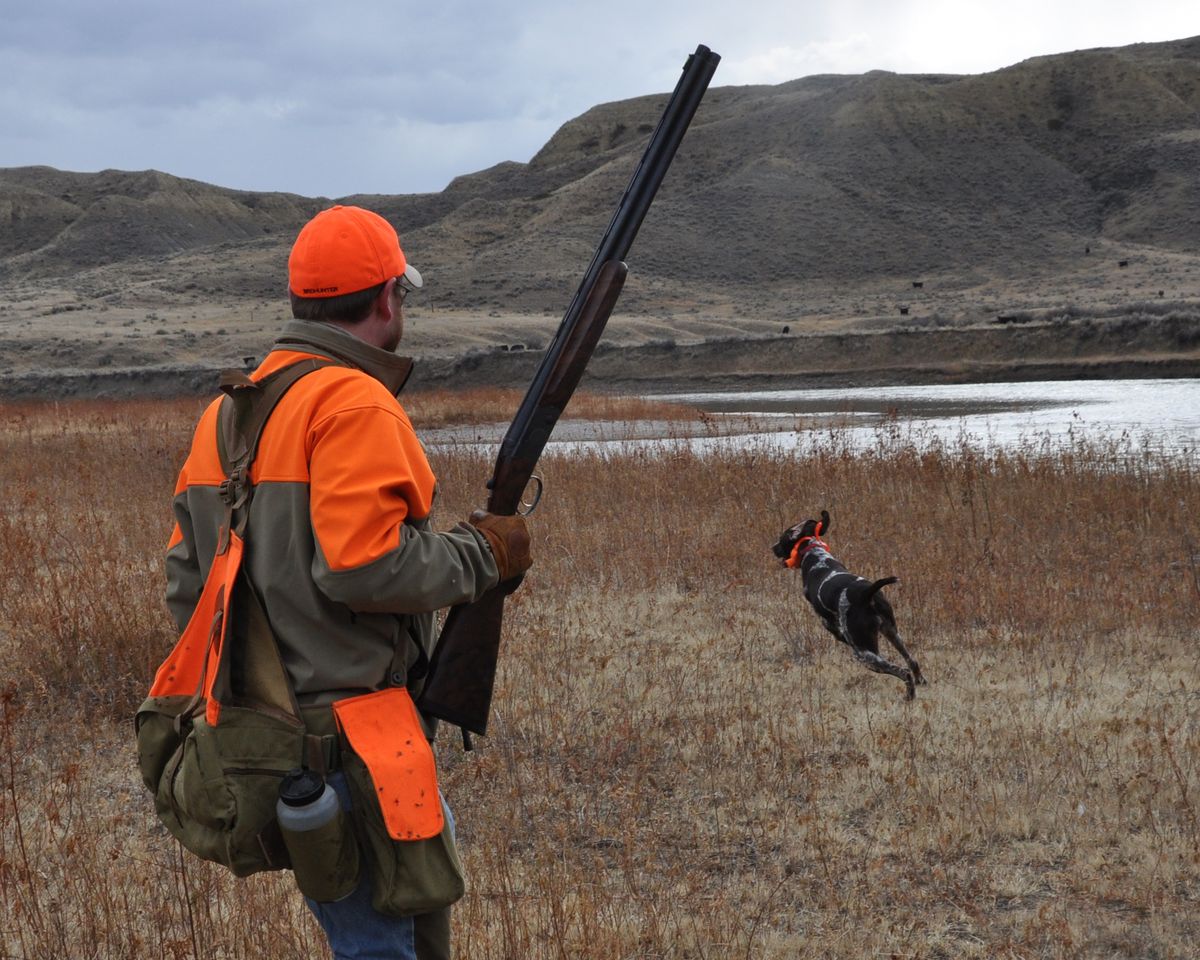Paddling option
Low-budget bird hunters go with the flow for access to hot spots

Our hopes were quickly confirmed as we beached our canoes on an island soon after launching on the Missouri River near Fort Benton. We’d removed our lifejackets, readied the dogs and were just loading shells into our shotguns when the first rooster pheasant of the day flushed within range from the shoreline willows.
“That’s a good start, even if I wasn’t ready,” said Bob St.Pierre, a Pheasants Forever official visiting Montana last week.
Finding a productive place to hunt upland birds in Montana isn’t as easy as it was years ago, before large ranches were selling as recreational property and huge blocks of farm land were being leased by outfitters.
However, a few hunters with the skills to navigate chilling waters are drifting their way back into the good ol’ days on the same waterway traveled by the Lewis and Clark expedition.
The permanent islands are public land, where within the first hour we flushed a half-dozen pheasants and dozens of waterfowl.
Ed Lehman, who runs the True Value Hardware store in the historic fur-trading and riverboat town of Fort Benton, suggested how to get the most bang for the buck on a paddling river hunt.
“Devote one canoe to pheasants if you want to carry lead shot; devote the other to waterfowl and carry steel shot (to be legal),” he said, noting that smaller steel shot loads would work fine on pheasants, too.
A minimum group of four with two canoes also offers a measure of insurance should an accident occur.
The Missouri River for much of its course through Montana is notably friendly to canoeing hunters, especially in low autumn flows through free-flowing stretches.
“You rarely go far before you hit shallow water or a gravel bar in our area,” said Mike Gregston, who runs Adventure Bound Canoe in Fort Benton.
Most of Gregston’s canoe rental, guiding and shuttle business comes from paddling groups heading downstream through the Upper Missouri Wild & Scenic River stretch, which runs 149 miles from the Fort Benton area downstream into the Missouri River Breaks at Kipp Recreation Area.
This stretch, which includes 13 Lewis and Clark Expedition campsites, has attracted flotillas of canoeists since being popularized in 1996 by Stephen Ambrose in his book, “Undaunted Courage.” Starting at Coal Banks downstream from Fort Benton, the area is protected as a national monument administered by the U.S. Bureau of Land Management.
Hunters – including big-game hunters – are becoming an increasing presence on the river during the fall and early winter seasons, Gregston said.
“Most of the hunters have their own canoes or rafts, so they’re contacting us mostly for shuttles,” he said.
“It’s pretty much ideal: Class I water; no rapids. If you do nothing more than stay upright in the boat and spin in circles, you’ll get to the next take-out or campground.”
Several stretches of the river can be floated and hunted in day trips, but paddlers heading downstream from Coal Banks must be equipped for several nights on the river to reach the first opportunity to take out at Judith Landing.
Pheasants were found on every island St.Pierre’s group hunted last week, although some flushed wild and offered no shooting opportunity.
But there was always some sort of attraction, including the seven bald eagles perched in two trees at the end of one island and the mule deer that erupted from another.
“I could get used to hunting like this,” said Billy Hildebrand, another hunter visiting from Minnesota. “I haven’t had to walk up a hill higher than 6 feet all day.”